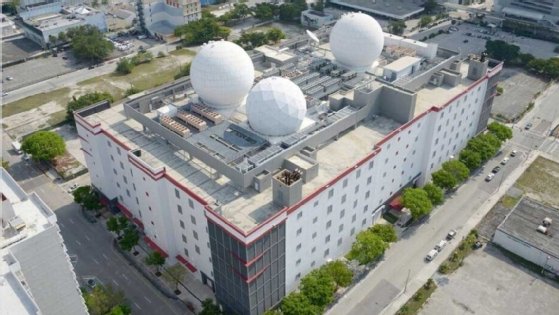Data center providers design for severe weather surge (original) (raw)
Data center providers are investing in resilient infrastructure and redundant power to prevent extreme weather-related outages that can cause serious financial loss to customers.
The death toll of Hurricane Helene hadn't been fully calculated when Hurricane Milton and its spawn of tornadoes set their destructive path across the west-central coast of Florida this week, demolishing homes, tearing roofs off buildings and knocking out critical power supplies.
Data center infrastructure providers in areas prone to natural disasters such as Florida have been investing in resilient design to withstand severe weather events as they become more common. Uptime is essential for these providers as they house critical telecommunications networks and IT systems for finance, business and healthcare.
Extreme weather -- such as historic high and low temperatures, high winds, floods and forest fires -- exacerbated by climate change has been associated with data center outages during the past few years, according to the Uptime Institute's Annual Outage Analysis 2024 report. Uptime, which provides data center tier design standards and services, predicts this trend will intensify and outage risks will rise until preventative action is taken.
Nearly half of data center operators have experienced an extreme weather event that threatened their continuous operation. Just less than 10% of data center operators suffered an outage or significant service disruption due to extreme weather -- making it one of the top causes of data center disruptions, according to Uptime's research.
Uptime's surveys consistently show that disruptions to on-site power distribution are the most common cause of serious outages. "This is unsurprising, given the intolerance of IT hardware to any significant power disturbances, such as voltage fluctuations or complete loss of power that lasts more than fractions of a second," the Annual Outage Analysis stated.
More than 1 million customers remain without power a week after Hurricane Helene, primarily in the Carolinas as well as parts of Florida. Following Hurricane Milton, more than 3 million customers were without power on Oct. 10.
While the data center providers in that area who responded to this story said they maintained uptime throughout this month's hurricanes, widespread, prolonged power outages could affect data centers, even with backup power systems.
Resilient infrastructure, preparedness a must
Continuous uptime is critical for data center infrastructure providers due to the volume of businesses that require high availability of the infrastructure in those buildings, said Grace Padrón, senior director of operations at Equinix, Miami and Atlanta.
"Our International Business Exchanges serve as critical hubs connecting global markets and powering the digital economy of commerce, finance, tourism, media, healthcare and more" Padrón said.
While outage risk factors are on the rise, Uptime's annual survey data shows that the rate of outages per facility is moving in the right direction. Although more than half (55%) of operator respondents to the 2023 Uptime Institute Data Center Survey reported having an outage in the past three years, that rate is down from 60% in 2022 and 69% in 2021. Further, only one in 10 outages in 2023 were categorized as serious or severe.
The improvement, according to Uptime research, is due to higher investments in physical infrastructure redundancy. In Uptime's Outage Analysis survey, 39% of enterprises and 35% of data center providers said they have increased power redundancy in their facilities during the past three to five years.
Indeed, providers in areas prone to hurricanes and tornadoes, such as Florida, Texas and Oklahoma, are building facilities designed to withstand the highest level of disasters.
Data center provider Tonaquint, for example, acquired the EdgeX data center in Oklahoma City in 2023 and renovated the facility to "withstand tornado-force winds up to 310 mph" and provide "100% uptime."
The Equinix data center in downtown Miami, called MI1, serves as a connection point between the U.S. and Latin America, Padrón said. Because it houses vital infrastructure, MI1 was built at a high point in Miami, 14 feet above sea level, with critical infrastructure an additional 18 feet above that, for a total of 32 feet of clearance. It also has 7-inch walls and is designed to withstand Category 5 hurricane-level winds, she said.
The company's data centers in Miami are concurrently maintainable, supported by redundant components and multiple distribution paths that serve the critical environment. The facilities' power systems include full uninterruptible power supplies with N+1 redundancy levels or greater and backup generator systems in the event of a local utility failure, according to Padrón.
"In case of a power outage, batteries turn on immediately, followed within seconds by the generators, which can power the entire data center for several days," she said, adding that more fuel supplies would be delivered to support generators until utility power is restored.
Similarly, Flexential, a colocation provider with two data centers in Tampa, builds-in multiple layers of redundancy, including UPSes, on-site generators and advanced cooling systems. They proactively monitor and prepare facilities to minimize any disruptions, said Ryan Mallory, chief operating officer at Flexential.
"These systems ensure continuous operations even during extreme weather events like hurricanes," Mallory said.
Its Tier III and Tier IV equivalent facilities are designed with redundant power and cooling systems, seismic bracing and flood-resistant design to ensure operational continuity during natural disasters like hurricanes, he said.

Equinix M1 data center in Miami is designed to withstand Category 5 hurricanes and provide uptime throughout extreme weather events.
Natural disaster prep
Equinix monitors hazardous weather events closely. In Miami, specifically, it begins preparations for adverse weather conditions on June 1 each year, she said.
"When we declare an emergency, like with Hurricane Milton for example, we activate hazardous weather protocols," Padrón said. "This involves making the data centers ready … ensuring necessary fuel, equipment and staff are in place."
The combination of resilient data center design and natural disaster preparation puts the data center provider in a position to withstand severe weather events, as it did with Hurricanes Helene and Milton. Padrón said Equinix did not expect any interruption or disruption to the services provided to customers.
When asked what level of downtime Flexential customers should expect following Hurricane Milton, the answer was, essentially, none. Its data centers in Tampa, Jacksonville and Fort Lauderdale remained fully operational, with no disruptions to customers, the company reported.
**"**Flexential builds its sites for 100% uptime. We have protocols in place to ensure we have adequate staff coverage [and] ample fuel supplies," Mallory said. "In the rare event of significant damage, Flexential has disaster recovery protocols and teams in place to restore full operations as quickly as possible. Depending on the situation, we aim for restoration within hours, ensuring minimal impact on customer operations."
The company contracts with a national fuel resupply company to ensure it has access to adequate fuel to run generators should a natural disaster affect the power feeds to the site. Tankers are also on site or within an agreed-upon distance to meet their resupply needs, Mallory said.
Lumen Technologies, formerly known as CenturyLink, provides IT services for Florida state and local government agencies, healthcare, K-12 and higher education communities. It has colocation facilities located in Hurricane Milton's path.
The company prepared for the hurricane by placing fuel and generators, as well as HVAC vendors, on standby in strategic locations in central Florida, outside the impact area to respond swiftly, according to Stephanie Meisse, a spokesperson for Lumen.
She said 1 and 2 megawatt generators were brought to several Florida locations to ensure rapid deployment post-Milton landfall, and tanker trucks of fuel and portable fuel storage tanks were placed in areas that may need to operate backup generators.
In addition, critical infrastructure and field technicians with satellite and FirstNet phones were positioned outside the predicted impact areas to respond quickly. Lumen prioritized commercial power locations and is working closely with Florida Power & Light to ensure quick restoration, Meisse said.
She reports that Lumen's facilities are up and running as of Thursday.
Bridget Botelho has covered a variety of technologies and IT industry trends since joining TechTarget in 2007. She leads TechTarget's team of reporters as Editorial Director of News.
Next Steps
How Hurricane Helene may cause semiconductor chip shortages
 Prepare your business for natural disasters with this checklist
Prepare your business for natural disasters with this checklist  By: Alison Roller
By: Alison Roller  Researchers: Work from home is key to business continuity
Researchers: Work from home is key to business continuity  By: Patrick Thibodeau
By: Patrick Thibodeau  Hurricane Milton makes a case for remote work
Hurricane Milton makes a case for remote work  colocation (colo)
colocation (colo)  By: Paul Kirvan
By: Paul Kirvan